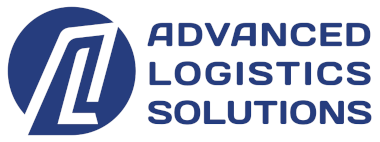
Executive Summary
The August 2025 elimination of the United States de minimis exemption for imports under $800 prompted significant adaptation in international trade practices. Organizations explored various approaches to manage the resulting customs duty obligations, with particular attention to B2B2C (Business-to-Business-to-Consumer) transaction structures. This model routes consumer transactions through wholesale intermediaries, potentially creating duty calculations based on wholesale rather than retail pricing. Industry observers report organizations achieving duty reductions in the 30-60% range through this approach, though questions remain about long-term sustainability, regulatory response, and compliance considerations. This analysis examines the B2B2C model’s mechanics, implementation considerations, regulatory framework, and strategic implications for organizations managing international trade operations in evolved compliance environments.
Tariff Optimization Through B2B2C Models: Analysis of Trade Compliance Strategies
(通过B2B2C模式的关税优化:贸易合规策略分析)
The regulatory landscape for international trade undergoes continuous evolution, creating both challenges and opportunities for organizations managing cross-border commerce. Understanding emerging approaches to trade compliance enables informed strategic planning.
De Minimis Exemption Changes and Market Response
Regulatory Background
Historical De Minimis Framework:
The de minimis exemption represented longstanding U.S. trade policy:
Policy Purpose:
- Administrative Efficiency: Reducing customs processing burden for low-value shipments
- Trade Facilitation: Streamlining cross-border commerce for small transactions
- Cost-Benefit: Balancing duty collection against administrative expenses
- Consumer Access: Enabling direct international retail purchases
Coverage Parameters:
- Value Threshold: $800 maximum value for duty-free entry
- Duty Exemption: No customs duties on qualifying shipments
- Tax Treatment: Exemption from federal taxes and fees
- Documentation: Simplified customs clearance procedures
Policy Evolution:
The exemption underwent significant changes:
Implementation Timeline:
- Original Acceleration: Initial schedule for July 1, 2027 implementation
- Revised Timeline: Advanced to August 29, 2025
- Policy Rationale: Addressing concerns about enforcement challenges and revenue impacts
- Scope: Comprehensive elimination affecting all low-value imports
Market Impact
Immediate Effects:
The policy change created various market responses:
E-Commerce Sector:
- Direct-to-Consumer Models: Significant impact on international retailers serving U.S. consumers
- Marketplace Platforms: Operational adjustments required for cross-border facilitators
- Seasonal Timing: Implementation during Q4 holiday preparation period
- Cost Structures: Fundamental changes to landed cost calculations
Trade Volume Patterns:
- Import Trends: Containerized imports at top 10 U.S. ports showing monthly variations
- Routing Decisions: Adjustments in shipping patterns responding to cost changes
- Market Segments: Differential impacts across product categories and price points
B2B2C Transaction Model Analysis
Understanding Tariff Arbitrage Strategy
Concept Definition:
“Tariff arbitrage strategy” refers to trade compliance approaches that seek to optimize customs duty obligations through transaction structuring and valuation methodology. The term gained prominence following regulatory changes affecting international trade, particularly the elimination of de minimis exemption.
Core Principle:
The strategy centers on leveraging differences in customs valuation bases:
Fundamental Mechanism:
- Price Differential: Exploiting the gap between wholesale and retail pricing
- Valuation Impact: Lower declared values resulting in proportionally lower duties
- Legal Framework: Operating within customs valuation rules and regulations
- Transaction Structure: Modifying commercial relationships to affect duty calculations
Industry Context:
The term “tariff arbitrage” emerged in trade compliance discussions:
Terminology Origins:
- Market Response: Industry terminology describing adaptation to regulatory changes
- Strategic Framing: Characterizing transaction restructuring as optimization approach
- Professional Discourse: Term used in logistics and trade compliance communities
- Descriptive Function: Capturing the essence of value-based duty optimization
Structural Framework
Transaction Flow:
The B2B2C model introduces intermediary wholesale transactions:
Traditional B2C Structure:
- Direct Flow: Manufacturer/retailer selling directly to consumer
- Duty Basis: Customs duties calculated on retail transaction value
- Simple Process: Straightforward customs valuation and clearance
- Clear Ownership: Transparent title transfer from seller to buyer
B2B2C Alternative Structure:
- Wholesale Layer: Transaction routed through wholesale intermediary
- Valuation Basis: Customs duties potentially calculated on wholesale pricing
- Additional Step: More complex transaction structure
- Ownership Chain: Multiple title transfers in transaction flow
Operational Mechanics:
Implementation involves specific procedural elements:
Transaction Routing:
- Platform Integration: Consumer purchase processed through wholesale intermediary systems
- Pricing Structure: Wholesale and retail pricing maintained in separate transaction layers
- Documentation: Customs paperwork reflecting wholesale transaction values
- Consumer Experience: End-user experience designed to remain unchanged
Customs Valuation:
- Declared Value: Import documentation showing wholesale transaction amounts
- Supporting Records: Commercial invoices and documentation supporting valuations
- Compliance Requirements: Adherence to customs valuation rules and regulations
- Audit Considerations: Maintaining records for potential customs review
Reported Financial Impact
Cost Reduction Patterns:
Industry observations suggest substantial duty savings:
Savings Range:
- Lower Bound: Approximately 30% reduction in duty obligations
- Upper Bound: Potential 60% savings in optimal circumstances
- Variability Factors: Product categories, pricing structures, and implementation approaches
- Volume Sensitivity: Effectiveness potentially varying with transaction volumes
Calculation Basis:
The savings derive from valuation differences:
Wholesale vs. Retail Pricing:
- Margin Differential: Typical retail markups creating valuation gaps
- Duty Application: Same duty rates applied to different value bases
- Mathematical Impact: Lower valuation producing proportionally lower duties
- Product Variation: Different products exhibiting varying margin structures
Regulatory and Compliance Considerations
Customs Valuation Framework
WTO Valuation Agreement:
International customs valuation follows established principles:
Transaction Value Method:
- Primary Basis: Customs value based on actual transaction price
- Conditions: Price must represent genuine commercial transaction
- Adjustments: Specific additions and deductions per regulations
- Documentation: Supporting evidence of transaction terms and pricing
Related Party Considerations:
Transactions between related entities face additional scrutiny:
Arm’s Length Standard:
- Independent Pricing: Prices should reflect market conditions
- Transfer Pricing: Coordination with tax transfer pricing policies
- Documentation Requirements: Enhanced evidence supporting pricing reasonableness
- Customs Review: Potential additional examination of related party transactions
Compliance Framework
Documentation Requirements:
Proper implementation requires comprehensive records:
Transaction Documentation:
- Commercial Invoices: Accurate invoices reflecting actual transaction terms
- Purchase Orders: Supporting documentation of business relationship
- Payment Records: Evidence of actual payments made
- Shipping Documents: Bills of lading and freight documentation
Customs Filings:
- Entry Documentation: Proper customs entry forms and declarations
- Value Declaration: Accurate declaration of customs value
- Classification: Correct tariff classification of goods
- Country of Origin: Proper origin determination and certification
Risk Management:
Organizations implementing these approaches should consider:
Audit Preparedness:
- Record Retention: Maintaining comprehensive documentation per regulations
- Audit Response: Procedures for responding to customs inquiries
- Compliance Review: Regular internal assessment of practices
- Professional Guidance: Access to customs law and compliance expertise
Regulatory Monitoring:
- Policy Changes: Tracking evolving customs regulations and guidance
- Enforcement Patterns: Understanding customs enforcement priorities
- International Coordination: Monitoring developments across jurisdictions
- Industry Practices: Awareness of accepted practices and precedents
Strategic Implementation Considerations
Organizational Assessment
Suitability Evaluation:
Organizations can assess applicability to their circumstances:
Business Model Factors:
- Transaction Volume: Sufficient scale to justify implementation complexity
- Product Characteristics: Appropriate products and pricing structures
- Geographic Scope: Relevant trade lanes and destination markets
- Operational Complexity: Capability to manage additional transaction layers
Cost-Benefit Analysis:
Understanding full financial implications:
Potential Benefits:
- Duty Savings: Reduced customs duty obligations
- Competitive Positioning: Potential pricing advantages
- Market Access: Enhanced economics for certain markets
- Profit Margins: Improved financial performance
Implementation Costs:
- System Integration: Technology investments for transaction routing
- Compliance Infrastructure: Enhanced compliance capabilities and expertise
- Operational Complexity: Additional processes and management requirements
- Professional Services: Legal, tax, and compliance advisory costs
Operational Integration
Technology Requirements:
Successful implementation involves various systems:
Core Systems:
- ERP Integration: Connecting wholesale and retail transaction systems
- Order Management: Processing consumer orders through wholesale layer
- Financial Systems: Accounting for multi-layered transactions
- Customs Documentation: Generating compliant import documentation
Data Management:
- Pricing Structures: Maintaining wholesale and retail pricing data
- Transaction Tracking: Following goods through transaction layers
- Compliance Records: Retaining required documentation
- Reporting Capabilities: Analytics and performance monitoring
Partner Relationships:
Various partnerships may support implementation:
Wholesale Platform Providers:
- Intermediary Services: Organizations providing wholesale transaction layer
- Technical Integration: System connections and data exchange
- Compliance Support: Guidance on proper documentation and procedures
- Operational Reliability: Consistent, reliable transaction processing
Service Providers:
- Customs Brokers: Expertise in customs valuation and compliance
- Logistics Partners: Coordination of physical goods movement
- Legal Counsel: Guidance on regulatory compliance and risk management
- Tax Advisors: Coordination with tax planning and transfer pricing
Industry Applications and Variations
Sector-Specific Considerations
Retail and E-Commerce:
This sector shows particular attention to the model:
Applicable Scenarios:
- Cross-Border Retail: International retailers serving U.S. consumers
- Marketplace Operations: Platforms facilitating international commerce
- Direct-to-Consumer Brands: Companies with international supply chains
- Seasonal Operations: Businesses with peak demand periods
Manufacturing and Distribution:
Industrial applications may differ:
Component Imports:
- Production Materials: Raw materials and components for manufacturing
- Equipment: Machinery and equipment imports
- Maintenance Parts: Spare parts and maintenance supplies
- Distribution Inventory: Finished goods for distribution operations
Technology Sector:
Tech companies face unique considerations:
Hardware Products:
- Consumer Electronics: Devices and peripherals
- Component Imports: Electronic components and assemblies
- Accessory Products: Related accessories and supplies
- Development Equipment: Prototypes and development tools
Sustainability and Long-Term Considerations
Regulatory Evolution Potential
Government Response Possibilities:
Customs authorities may address emerging practices:
Policy Adaptations:
- Valuation Guidance: Clarifications on proper customs valuation methods
- Enforcement Focus: Enhanced scrutiny of certain transaction structures
- Regulatory Changes: Potential rule modifications addressing specific practices
- International Coordination: Coordination among customs authorities globally
Compliance Evolution:
Requirements may develop over time:
- Documentation Standards: Enhanced documentation requirements
- Audit Frequency: Increased customs examination rates
- Penalty Structures: Adjustments to penalties for valuation errors
- Industry Guidance: Official guidance on acceptable practices
Economic and Competitive Dynamics
Market Adoption Patterns:
Broader adoption affects competitive landscape:
First-Mover Advantages:
- Early Implementation: Benefits from establishing practices before widespread adoption
- Learning Curve: Experience gained during initial implementation
- Technology Investment: Systems developed before competitive pressure
- Market Position: Competitive advantages during transition period
Competitive Evolution:
- Widespread Adoption: Competitive advantages diminish as practices spread
- New Baselines: Industry standards adjusting to new approaches
- Innovation Pressure: Continued need for differentiation and improvement
- Efficiency Focus: Emphasis on operational excellence and cost management
Broader Economic Context
Trade Policy Environment:
Implementation occurs within evolving trade policy landscape:
Current Conditions:
- Tariff Structures: Various tariff rates and trade agreements affecting duties
- Trade Tensions: Geopolitical factors influencing trade policy
- Economic Conditions: Inflation and economic performance affecting policy
- Regulatory Changes: Ongoing evolution in trade regulations
Inflation Considerations:
Organizations and policymakers consider inflation impacts:
Duty Cost Impacts:
- Consumer Prices: How duty changes affect retail pricing
- Import Volumes: Trade flow responses to cost changes
- Economic Activity: Broader economic effects of trade policy
- Policy Objectives: Balancing various economic policy goals
Strategic Perspectives and Insights
Risk and Opportunity Balance
Potential Benefits:
Organizations implementing these approaches may experience:
- Cost Reduction: Lower customs duty obligations
- Competitive Position: Potential advantages in pricing and market access
- Operational Learning: Enhanced understanding of customs compliance
- Strategic Flexibility: Additional options in trade compliance approaches
Considerations and Risks:
Various factors warrant attention:
- Regulatory Uncertainty: Potential for policy changes affecting practices
- Compliance Complexity: Additional requirements and management needs
- Audit Exposure: Potential for customs examination and questions
- Sustainability Questions: Uncertainty about long-term viability
Professional Guidance Importance
Expert Consultation:
Complex trade compliance benefits from professional expertise:
Relevant Specialists:
- Customs Attorneys: Legal guidance on customs regulations and compliance
- Trade Consultants: Strategic advice on trade compliance approaches
- Tax Advisors: Coordination with tax planning and transfer pricing
- Compliance Professionals: Operational guidance on documentation and procedures
Organizational Capabilities:
Internal capabilities support effective implementation:
- Compliance Expertise: Knowledge of customs regulations and requirements
- System Integration: Technology capabilities for complex transactions
- Process Management: Ability to manage multi-layered operations
- Risk Management: Framework for assessing and managing compliance risks
Conclusion: Understanding Evolving Trade Compliance Landscapes
The elimination of de minimis exemption represents one example of how trade policy changes create needs for organizational adaptation. The B2B2C transaction model emerged as one response to changed economic circumstances, reflecting how organizations seek to optimize operations within regulatory frameworks.
Key Insights
Regulatory Adaptation:
Trade policy changes require ongoing organizational attention:
- Continuous Monitoring: Tracking regulatory developments affecting operations
- Flexible Approaches: Maintaining adaptability to changing requirements
- Compliance Priority: Ensuring operations remain within regulatory bounds
- Professional Resources: Access to expertise supporting informed decisions
Strategic Considerations:
Organizations evaluating trade compliance approaches benefit from considering:
- Comprehensive Analysis: Understanding full implications of different approaches
- Risk Assessment: Identifying and evaluating various risk factors
- Cost-Benefit Understanding: Clear view of potential benefits and associated costs
- Long-Term Perspective: Considering sustainability beyond immediate benefits
Informed Decision-Making:
Effective trade compliance strategy requires:
- Accurate Information: Understanding current regulations and requirements
- Professional Guidance: Expert advice on complex compliance matters
- Organizational Capability: Internal skills and systems supporting compliance
- Continuous Evaluation: Ongoing assessment of approaches and effectiveness
Broader Context
The B2B2C model represents one approach among various strategies organizations employ to manage international trade operations. Trade compliance remains complex field where organizations balance regulatory requirements, cost management, and operational efficiency.
Understanding available approaches, their implications, and their limitations enables informed strategic planning aligned with organizational objectives and risk tolerance. As trade policy continues evolving, organizations benefit from maintaining awareness of regulatory developments and flexibility in operational approaches.
Advanced Logistics Solutions provides international trade consulting services, helping organizations understand customs regulations, evaluate compliance approaches, and develop strategies aligned with regulatory requirements and business objectives. Our specialists offer expertise in customs valuation, trade compliance, and strategic planning for international operations. Contact our team to discuss trade compliance considerations for your organization.


